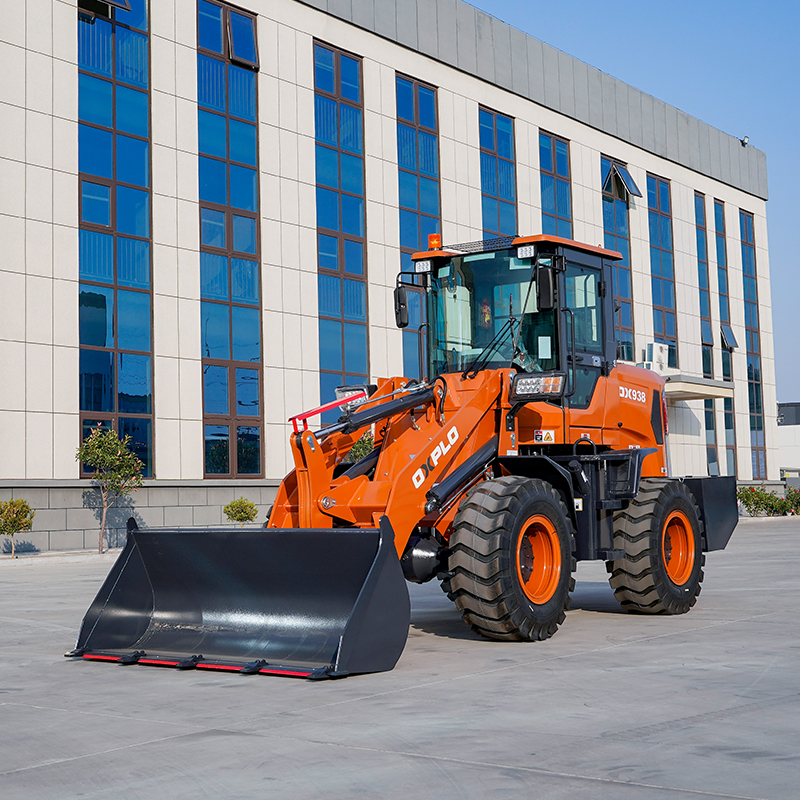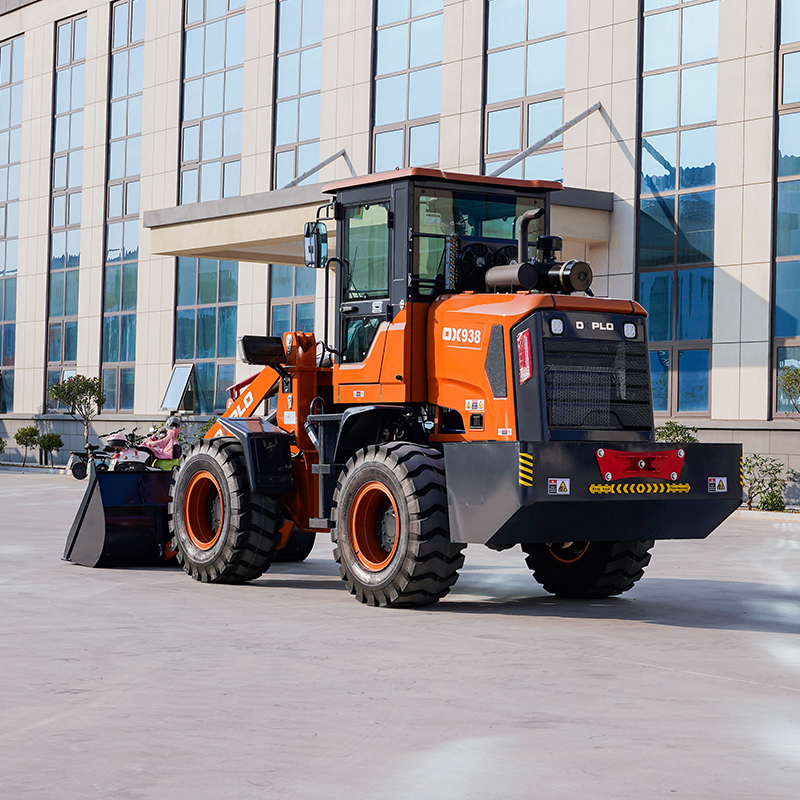Wheel loader installation of anti-skid chain knowledge
2024-02-04
In rain and snow weather or muddy road conditions, it is a common practice for wheel loaders to install anti-skid chains, which can improve the traction and stability of the loader on low friction roads. OXPLO is a professional manufacturer of loaders, has its own R & D department and innovation team, below to understand some knowledge about the wheel loader installation of anti-skid chain.

1. Provide extra traction: In rain and snow, the road surface may become slippery or icy, which reduces the friction between the tire and the road surface, causing the loader to lose traction during operation. Installing a skid chain can increase the friction between the tire and the ground, providing additional traction, allowing the loader to better ride and maneuver.
2. Improve stability: When the loader is driving on the wet or frozen road surface, it is easy to slip or skid, which may lead to unstable operation and accidents. The chain can provide better stability, reduce the risk of sideslip or slip, and make the operation safer and more reliable.
3. Increase braking effect: On wet or icy roads, the braking distance may increase because the tires do not sufficiently rub against the ground. Installing a chain can increase the friction between the tire and the ground, improve the braking effect, reduce the braking distance, and thus increase the control of the operation.

After we understand the function and importance of wheel loaders installing anti-skid chains, we also need to understand what kinds of anti-skid chains are now on the market, and they are more suitable for use in that kind of work scenario.
1. Steel wire chain: This is the most common type of chain, which consists of steel wire rings that are fixed to the tire through connectors or screws. Steel wire chains provide good traction and stability, suitable for a variety of road conditions, including snow, ice, mud and steep slopes. They provide stable traction and can handle a variety of road conditions.
2. Rubber chain: Rubber chain is a relatively new type of anti-skid chain. It consists of rubber rings that have a non-slip texture and reliable traction. The rubber chain is relatively lightweight, reducing wear on tires and roads while providing a good anti-slip effect. Suitable for snow and ice and other relatively flat road surface, they are less wear on tires and roads, suitable for use in the need to protect the road surface.
3. Threaded chain: Threaded chain is a kind of anti-skid chain with a threaded texture. It provides better traction and grip and is particularly suitable for use on frozen and icy roads. It can increase the friction between the tire and the ground, providing a better anti-skid effect.
4. Composite chains: Composite chains combine the advantages of materials such as steel wire and rubber, which are usually resistant to wear. Corrosion and skid resistance, while reducing damage to road surfaces. Balancing the anti-skid effect and road surface damage to a certain extent, they are suitable for a variety of road conditions, including snow, ice and mud.

When we determine the right chain for ourselves, there are also some precautions in the installation process
1. Preparation: Ensure that the loader is shut down and a safe working environment is provided. Check that the chain is intact and that the chain length matches the tire size.
2. Clean the tire: Use brushes and cleaners to clean the mud, dust and oil on the surface of the tire, and ensure that the tire surface is dry so that the anti-skid chain can be tightly fitted.
3. Install the chain: Wrap the chain around the tire to ensure that the chain is evenly distributed on the tread of the tire, depending on the design of the chain, it may be necessary to adjust the tightness and position of the chain to ensure good fit and traction.
4. Ensure safe locking: According to the design of the chain, fix the chain on the tire using the connector or screw provided to ensure that the connector or screw is fully locked to prevent the chain from falling off or loosening during operation.
5. Adjust the chain: Ensure that the chain is evenly distributed over the entire tire surface and maintains the appropriate tightness. As needed, the tightness of the chain may need to be adjusted to ensure good traction and stability.
6. Check the installation: After the installation is complete, check whether the chain is firm and stable, and there is no loose or hanging part. Make sure the chain is in full contact with the tire surface, with no twisted or crossed parts.
7. Test run: After the installation is complete, a short test run is carried out to ensure that the chain works properly and provides the required traction and stability. Pay attention to the handling and driving characteristics of the loader to ensure that no abnormal conditions occur.

When using a chain, here are some aspects to pay attention to
1. Safe operation: Always ensure that the loader is operated in a safe environment, and follow the relevant safety regulations and operating procedures, taking care to avoid collision with pedestrians, other vehicles or obstacles.
2. Speed control: When using a chain, it is very important to slow down the speed of travel. Reducing speed improves traction and stability, reducing the risk of skidding and sidescarping.
3. Not for dry ground: The anti-skid chain is mainly designed for low friction or icy roads, not for dry roads. When driving on dry roads, the chain should be removed in time to avoid unnecessary wear on tires and roads.
4. Check the status of the chain: Check the status and tightness of the chain before and after using the anti-skid chain. Make sure the chain is not damaged, broken or loose. If any problem is found, it should be replaced or repaired in time.
5. Avoid sudden braking and sharp turning: When using the anti-skid chain, avoid sudden braking and sharp turning, so as not to damage the chain or cause the loader to lose stability.
6. Avoid inappropriate road conditions: try to avoid driving in the road conditions that are not suitable for the use of skid chains, such as extremely steep ramps, uneven roads or narrow channels that the loader cannot pass.
7. Regular maintenance and cleaning: check and clean the chain regularly to ensure that there is no accumulation of debris in the chain, and the chain ring is not rusted or damaged. Perform necessary maintenance and lubrication according to manufacturer's recommendations.
8. Compliance with regulations and regulations: According to local regulations and regulations, comply with the requirements and restrictions on the use of skid chains, some areas may have specific requirements or restrictions on the use of skid chains.

Well, the above is the OXPLO brand to introduce you to the anti-skid chain knowledge of wheel loaders, I hope this article can help you understand more knowledge of anti-skid chain.




